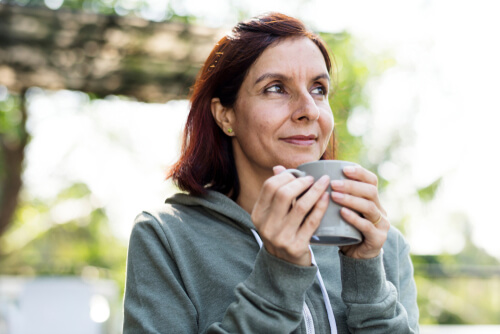
Page contents
- Managing diabetes at home
- 1. Learn about diabetes
- 2. Monitor blood sugar levels
- Treatment for type 1 diabetes
- Treatment for type 2 diabetes
- 3. Medicine management
- 4. Healthy eating
- 5. Hydration
- 6. Physical exercise
- 7. Stress Management
- 8. Regular screening for diabetes complications
- 9. Foot Care
- 10. Emergency Preparedness
- What is hypoglycaemia (hypo)?
- What causes a hypo?
- What are the symptoms of a hypo?
- How do you treat a severe hypo?
- 11. Home care
- 12 Financial support
Page contents
- Managing diabetes at home
- 1. Learn about diabetes
- 2. Monitor blood sugar levels
- Treatment for type 1 diabetes
- Treatment for type 2 diabetes
- 3. Medicine management
- 4. Healthy eating
- 5. Hydration
- 6. Physical exercise
- 7. Stress Management
- 8. Regular screening for diabetes complications
- 9. Foot Care
- 10. Emergency Preparedness
- What is hypoglycaemia (hypo)?
- What causes a hypo?
- What are the symptoms of a hypo?
- How do you treat a severe hypo?
- 11. Home care
- 12 Financial support
Managing diabetes at home
Finding out you have diabetes can be scary and you may worry about how to manage diabetes at home. This article highlights how to manage diabetes symptoms, treatments and what help is available. Diabetes Week takes place 10-16 June every year.
Before you can manage diabetes at home, the first thing to do is understand what diabetes is.
1. Learn about diabetes
It is important to be informed and keep up with the latest diabetes research and management strategies.
Family Support: Educate your family about diabetes to ensure they understand your needs and can provide support.
How does diabetes affect you?
Diabetes is a metabolic disease in which blood sugar levels (blood glucose) are too high. The condition occurs when either the body does not produce enough insulin (a hormone that regulates blood glucose) or the insulin produced does not work properly. The body can’t get enough glucose into cells to use as fuel. Diabetes can lead to serious damage to the heart, blood vessels, nerves, eyes and kidneys over time. Diabetes is described as a ‘hidden’ condition because people cannot identify that someone has diabetes with their own eyes.
What are the different types of diabetes?
There are two key types of diabetes: type 1 and type 2. There are also some rarer types such as gestational diabetes. With type 1 diabetes, symptoms can be obvious and develop more quickly than type 2 diabetes. Some people may not have any symptoms.
What is type 1 diabetes?
Type 1 diabetes is a lifelong condition caused by the body attacking and destroying the cells to the extent that the body cannot make any of the hormone insulin.
Type 1 diabetes means the pancreas produces little or no insulin by itself. If you have type 1 diabetes, your blood sugar is too high because your body can’t make any insulin.
Someone with type 1 diabetes needs to take insulin every day to keep their blood glucose levels under control. They must also check their blood glucose levels.
What is type 2 diabetes?
The most common type of diabetes is type 2 diabetes. Type 2 means the insulin produced by your body does not work properly or your pancreas cannot make enough of it.
Type 2 diabetes affects how your body uses sugar (glucose) for energy. It can lead to high levels of blood sugar, if not treated.
In type 2 diabetes, the symptoms can be mild and can take many years to spot. It is possible for type 2 diabetes to be reversed with a healthy eating plan and exercise.
Gina, who lives with type 2 diabetes says: “Obviously I’m always thinking about it. I will manage it by checking my blood sugars regularly, by taking my insulin when I’m due to take my insulin.”
What is the difference between type 1 and type 2 diabetes?
Type 1 diabetes is caused by the body attacking and destroyed the cells in the pancreas to the extent that the body cannot make any insulin.
Type 2 diabetes sees the body unable to make enough insulin or the insulin it makes does not work properly.
What are signs of diabetes?
Common symptoms of diabetes include:
- Needing to urinate more often than usual because your body is trying to lower your blood sugar levels by getting rid of extra sugar in the blood.
- This can lead to being very thirsty and not being able to quench your thirst.
- Genital thrush and itching. This happens if your urine contains lots of sugar from your blood which can result in a fungal infection.
- Being very tired and lack of energy. This is because sugar in the blood cannot get into the cells to turn into energy.
- As a result, your body may try to break down fat stores instead which means you will lose weight and look thinner without trying.
- Wounds may take longer to heal. This is because high blood sugar can make it hard for nutrients and oxygen to get to your wound.
- Blurred eyesight. This is because as blood sugar can build up and make it harder to see.
What should I do if I have any diabetes symptoms?
If you have any of these diabetes symptoms, see your GP.
Diabetes complications include:
- Blindness. This is caused by damaged blood vessels in the eyes.
- Problems with feet from nerve damage and poor blood flow. This can lead to foot ulcers.
- Lower limb amputation.
- Heart attack.
- Stroke.
- Kidney failure.
How common is diabetes?
About 422 million people worldwide have diabetes, according to the World Health Organisation. It states that 1.5 million deaths in the world are attributed to diabetes every year.
Fewer than one in 10 people in the UK who have diabetes have type 1 diabetes.
Is there a cure for diabetes?
There is currently no cure for type 1 diabetes. The World Health Organisation states ‘neither its cause or the means to prevent it are known’.
‘I live such a full life’
However despite there being no cure, Kaajal, who lives with type 1 diabetes, says in film footage for Diabetes UK, “I live such a full life.
“I design, I go to the gym, I go out. It’s not like you can’t have fun. You can but you have to be a little more aware of yourself.
“I never wanted anyone to turn around and say to me ‘Because of diabetes you can’t do this’.
How do you treat diabetes?
Diabetes can be treated and any negative consequences avoided or delayed by checking your blood glucose levels, healthy eating, physical activity, medication and regular screening and treatment for diabetes complications.
2. Monitor blood sugar levels
Regular monitoring helps track your blood sugar levels and manage your diabetes at home.
How do you check your blood glucose levels?
- Glucometer Use: Learn to use a glucometer to check your blood sugar at home. Your doctor will advise how often you should test.
- Continuous Glucose Monitors (CGMs): These devices provide real-time blood sugar readings and trends.
- Keep a Log: Record your blood sugar readings to identify patterns and make adjustments.
You must check your blood glucose levels at least four times a day. This includes before meals, two to three hours after meals, before, during a break and after exercise and before bed.
To do this you should use a blood glucose meter, small needles (lancets), a finger-prick device and test strips.
To check your blood glucose:
- Insert a test strip into the blood glucose meter.
- Attach a fresh small needle to the pen.
- Place the pen to the side of your finger.
- Press the button on the device or pen to push the needle in
- Gently squeeze your finger until you have a drop of blood.
- Ensure the blood touches the top of the test strip.
- Read the numbers on the screen of your meter.
Using a glucose monitor can help someone with diabetes to monitor their blood sugar levels without the need for lots of finger prick tests.
Treatment for type 1 diabetes
Insulin helps the body use glucose as energy.
If you have type 1 diabetes, you can’t live without insulin injections or using an insulin pump.
According to the NHS, most people with type 1 diabetes take both long-acting insulin once or twice a day and rapid-acting insulin before meals.
Your healthcare team will discuss with you your insulin type and what dose of insulin you should have. You will be prescribed insulin pens, medicine etc appropriate for you.
- Insulin Injections You can inject insulin into your body with an insulin pen.
This may be a reusable or disposable insulin pen. Disposable pens already have insulin in them. Reusable pens can be used after you fit it with an insulin cartridge.
Insulin is injected underneath the skin (not in a vein) using a small thin needle which cannot be reused. The insulin is injected where there is fatty tissue such as the thigh or bum. The place on the body that is getting the injection must change every time to ensure the insulin continues to be absorbed into the body.
The charity Diabetes UK has a video you can watch which demonstrates how to inject insulin into the body using an insulin pen.
- Insulin Pump This is attached to your skin and via a tube (under your skin) enables small amounts of insulin to enter the bloodstream 24/7. Every two to three days the tube is replaced and the pump is moved to a different part of the body.
Treatment for type 2 diabetes
- Insulin injections. Your healthcare team will discuss your insulin type and what dose of insulin you should have. You will be prescribed insulin pens, medicine etc appropriate for you.
According to the NHS, people who need insulin for type 2 diabetes usually take either:
-a long-acting or intermediate-acting insulin once or twice a day.
-a long-acting or intermediate-acting insulin once or twice a day, and a separate rapid-acting or short-acting insulin before meals.
-a mixed insulin containing both intermediate and rapid-acting or short-acting insulin, 1 to 3 times a day before meals.
3. Medicine management
Some people with type 2 diabetes will need to take medicines to help manage their blood sugar levels. They may also need medications to lower their blood pressure and statins to reduce the risk of complications.
They may be given medicines such as:
- Metformin. If healthy eating and exercise do not help, people with type 2 diabetes are usually first given this medicine to improve the way your body makes insulin.
- Sulfonylureas. These tablets encourage the pancreas to make more insulin.
- Prandial glucose regulators. These pills also encourage the pancreas to produce more insulin.
- Sodium-Glucose co-transporters Type 2 (SGLT-2) inhibitors. These tablets reduce the level of glucose absorbed by kidneys and blood.
- Glitazones. This reduces the body’s insulin resistance, so that insulin can work more effectively.
- Gliptins (DPP-4 inhibitors). These tablets help the body produce more insulin and less glucose, when it isn’t needed from the liver.
4. Healthy eating
Healthy eating involves eating food with less salt, less sugar, less red meat, less processed meat and eating healthy carbohydrates and more fruit and vegetables.
- It is important to have a balanced diet by including a wide range of foods from all food groups, particularly vegetables, fruits, lean proteins, whole grains and healthy fats.
- Consider carbohydrate counting. This requires you to understand how carbohydrates affect blood sugar and learn to count them to manage your post-meal blood sugar levels.
- Choose foods with a low glycemic index (GI), which have a slower effect on blood sugar levels.
- Have meals at regular intervals to prevent spikes and drops in blood sugar.
5. Hydration
Staying hydrated is essential for overall health and blood sugar management. Aim to drink plenty of water and limit sugary drinks and alcohol.
6. Physical exercise
Regular physical exercise helps improve insulin sensitivity and lowers blood sugar levels.
For example, 30 minutes of exercise, five times a day. Some people with type 2 diabetes can reverse their diabetes by losing weight.
Consider:
- Aerobic exercises: At least 150 minutes of moderate-intensity aerobic activity, such as walking or cycling each week.
- Strength exercises: At least two days a week to improve muscle mass and reduce blood sugar levels.
- Flexibility exercises: Yoga or pilates can improve overall fitness and help manage stress levels.
7. Stress Management
Stress can seriously impact a person’s blood sugar levels.
You may feel frustrated, anxious and stressed over having to manage your diabetes. You may worry that you may have a ‘hypo’. This could impact your mood and make you feel low.
Consider:
- Relaxation techniques such as deep breathing and meditation.
- Pursue hobbies and interests that you enjoy to reduce stress.
- Seek professional help from a counselor or therapist if you need mental health support.
- Reach out to diabetes support groups. Find your local Diabetes UK support group.
8. Regular screening for diabetes complications
It is a good idea to have regular screening to check for diabetes complications. For example:
- Eye exams to screen for retinopathy, which causes blindness.
- Screening and treatment for kidney disease.
9. Foot Care
Diabetes can cause nerve damage and poor circulation, leading to foot problems.
Practice good foot care with:
- Daily Inspection: Check your feet daily for cuts, blisters, or sores.
- Wear well-fitting shoes and avoid walking barefoot.
- Have your feet examined regularly by a healthcare professional.
10. Emergency Preparedness
Be prepared for potential diabetes-related emergencies:
- Hypoglycemia: Know the signs of low blood sugar and how to treat it quickly with fast-acting carbohydrates.
- Hyperglycemia: Recognize high blood sugar symptoms and know when to seek medical help.
- Emergency Supplies: Keep a diabetes emergency kit with glucose tablets, snacks, and medical information.
What is hypoglycaemia (hypo)?
Hypoglycaemia or ‘a hypo’ occurs when a person’s blood glucose level (blood sugar) goes too low (below 4mmol/l).
What causes a hypo?
A ‘hypo’ can be caused by having more insulin (or certain diabetes medication) than needed, skipping or delaying a meal/snack, not having enough carbohydrate in your meal, lots of exercise without eating extra carbohydrates or reducing your insulin dose, alcohol, being ill, stress or anxiety or extreme weather changes.
What are the symptoms of a hypo?
Hypo symptoms include feeling shaky, disorientated, sweating, night sweats, lack of concentration, going pale, palpitations and a fast pulse. Your lips may also feel tingly, you may experience blurred vision, tiredness, headaches, feeling hungry, feeling anxious or irritable.
How do you treat a severe hypo?
Your family/friends must know what to do if you have a severe hypo and become unconscious.
They must:
- Put you into the recovery position (on your side, with your head tilted back and knees bent).
- Give you a glucagon injection if there is one and someone knows how to use it.
- Call an ambulance (if you don’t have a glucagon injection or if you haven’t recovered 10 minutes after the injection).
- Not try to give you any food or drink because you won’t be able to swallow.
11. Home care
There are home care providers who can help people live well independently at home. This can include help taking medications, assistance with daily chores such as transport to medical appointments and companionship.
Home adaptations can also be made to your home if, for example, you have had lower limbs amputated and require the use of a wheelchair at home.
You can read about different types of home care available.
12 Financial support
Can I get disability benefits for diabetes?
If you have diabetes you may want to know if there is any financial support you can receive. You could receive disability benefits for diabetes if it stops you from being able to work. If it leaves you unable to properly handle daily tasks or care for yourself on your own, you may also qualify.
If you have diabetes and are aged 16+ and it affects your ability to do daily tasks or to get around and you need support, you may be eligible for Personal Independent Payment (PIP).
Are carers entitled to benefits if caring for someone with diabetes?
If you are caring for someone with diabetes and they have a disability benefit or another benefit, you may also be able to claim Carer’s Allowance. But you’ll need to be providing more than 35 hours care a week.


